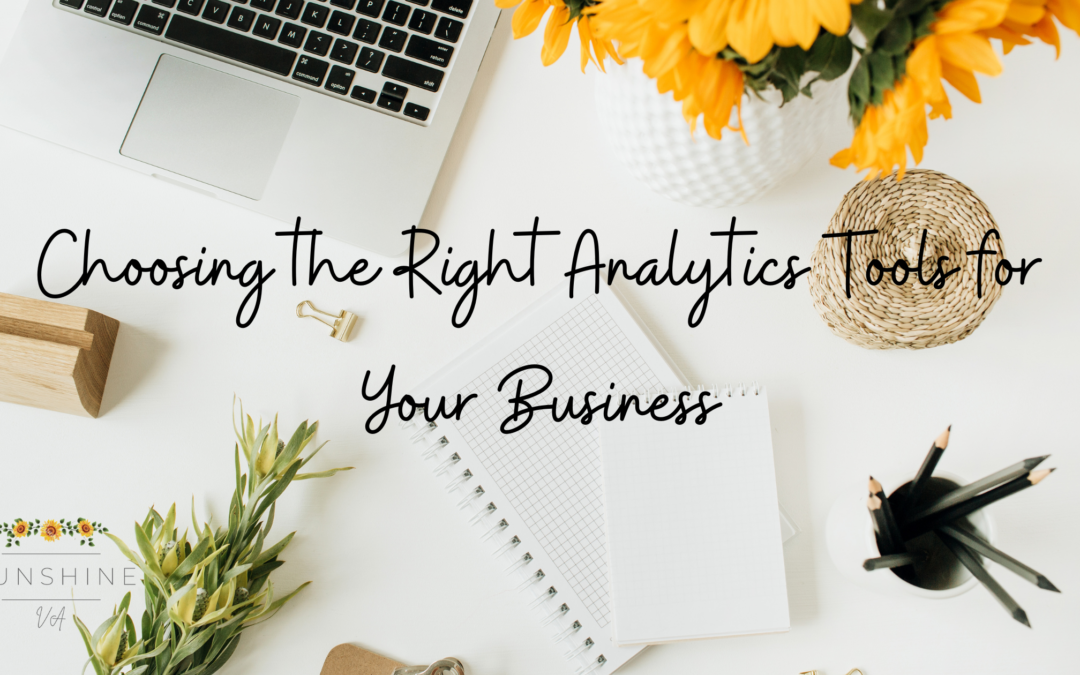In today’s data-driven world, businesses have access to an abundance of data that can be harnessed to make informed decisions, optimize operations, and drive growth. However, to make the most of this data, you need the right analytics tools. With a plethora of options available, choosing the right analytics tools for your business can be a daunting task. In this guide, we’ll walk you through the process of selecting the most suitable analytics tools and platforms to track performance and gather valuable insights, helping you make informed decisions that lead to success.
- Define Your Objectives and Needs
The first step in choosing the right analytics tools is to clearly define your objectives and needs. Consider the specific goals you want to achieve with data analysis. Are you looking to improve customer retention, optimize your supply chain, or enhance your marketing efforts? Understanding your objectives will guide you in selecting the tools that align with your business goals.
- Assess Your Data Sources
Analyze the sources of data you have or plan to collect. Different analytics tools may specialize in particular types of data, such as web analytics, social media data, or sales data. Ensure that the tools you choose are compatible with the data sources you rely on. Additionally, consider the volume and frequency of data you generate or collect, as this can impact the scalability and performance of your chosen tools.
- Consider Ease of Use
User-friendliness is crucial when selecting analytics tools. Your team members may have varying levels of technical expertise, so it’s essential to choose tools that are intuitive and easy to use. Look for platforms that offer user-friendly interfaces and provide adequate training and support.
- Scalability and Integration
As your business grows, your data needs will evolve. Therefore, it’s vital to select analytics tools that can scale with your business. Additionally, consider how well the tools integrate with your existing software and systems. Seamless integration ensures a more efficient workflow and data sharing across different departments.
- Analytical Capabilities
Different analytics tools offer various analytical capabilities. Some tools focus on descriptive analytics, which helps you understand what happened in the past. Others provide predictive and prescriptive analytics, allowing you to forecast future trends and make data-driven decisions. Assess your requirements and choose tools that offer the analytical features you need.
- Cost Considerations
Budget plays a significant role in tool selection. Analyze the cost structure of potential analytics tools, including initial setup, licensing, and ongoing maintenance expenses. It’s essential to strike a balance between your budget and the capabilities you require. Keep in mind that investing in the right tools can yield a significant return on investment through improved decision-making and efficiency.
- Security and Compliance
Data security and compliance are non-negotiable in today’s business landscape. Ensure that the analytics tools you choose adhere to industry-standard security protocols and comply with relevant data protection regulations, such as GDPR or HIPAA, depending on your business’s nature.
Selecting the right analytics tools for your business is a crucial step toward harnessing the power of data-driven decision-making. By defining your objectives, assessing your data sources, and considering ease of use, scalability, integration, analytical capabilities, cost, and security, you can make an informed choice that aligns with your business needs.
Remember that the right analytics tools can provide you with valuable insights, helping you stay competitive and agile in your industry. Whether you’re a small startup or a large enterprise, making the right choice today can pave the way for a more data-savvy and successful future for your business.

